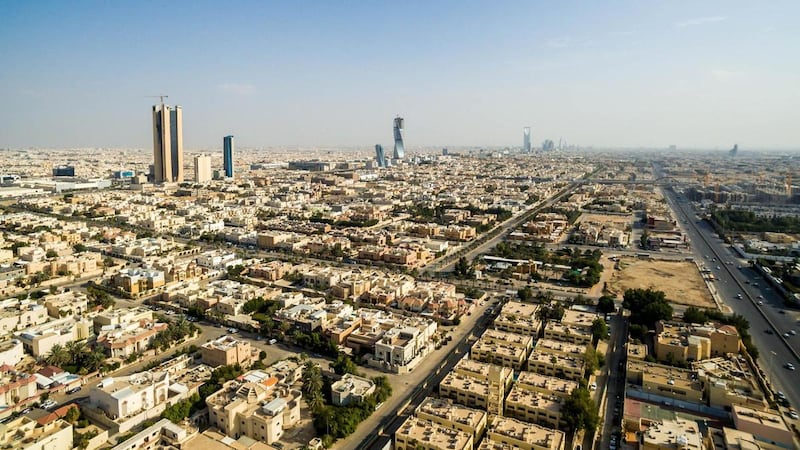Risks to the stability of Saudi Arabia’s banking system are expected to remain “contained” despite the rapid expansion of the sector over the next two years, a report from S&P Global Ratings suggests.
It comes as the Arab world's largest economy continues to recover from the coronavirus pandemic on the back of higher oil prices and reforms, S&P said.
Domestic credit growth will “stay strong” in 2022-2023 after the sharp 15 per cent surge last year as the government focuses on meeting its targets as part of the vision 2030 strategy and Saudi Arabians seek loans for housing, the ratings agency said on Sunday.
The kingdom is diversifying its economy away from oil as part of the Vision 2030 agenda and is developing projects across sectors including property, petrochemicals, transport and hospitality to attract investment and boost employment.
The country also set an ambitious target of raising home ownership rates among its citizens to 70 per cent by 2030 under the Sakani programme – a joint project between the Ministry of Housing and Real Estate Development Fund.
“Over the next few years, we forecast total credit growth at 10 per cent to 12 per cent,” S&P said.
“Under our base-case scenario, we expect domestic private sector credit to reach 90 per cent to 95 per cent of GDP [gross domestic product] in 2022-2023 versus 68.8 per cent in 2019. We expect the cost of risk to stabilise close to pre-Covid-19 levels after declining in 2021.”
Saudi Arabia, Opec’s biggest oil producer, is recovering strongly from the effects of the pandemic. The kingdom’s economy is forecast to grow 7.7 per cent this year from 3.2 per cent last year, helped by higher oil prices and a "robust" non-oil sector, Jadwa Investment said in a report this month.
Oil prices are continuing to trade higher this year because of supply concerns due to Russia’s military offensive in Ukraine, with Brent up more than 40 per cent since the start of the year.
“Saudi banks benefit from a low-cost and stable core deposit base, with limited reliance on external debt. Low cost of funds and better-than-average cost of risk have supported the banking sector's profitability,” the ratings agency said.
Regulatory oversight by the Saudi Central Bank has also helped. The regulator has "consistently encouraged banks to proactively build strong loan loss provision buffers and has been instrumental in helping banks manage volatility in less favourable liquidity conditions over the past two years", it said.
Recent competitive developments such as the licensing of three online banks, approval for a telecoms company to convert its payments business into a digital bank and the opening of branches of foreign banks in Saudi Arabia are not expected to affect the banking sector's profitability, S&P said.
“This is because Vision 2030 has created sufficient room for the sector's growth; bank customers, particularly corporate entities, continue to show a preference for traditional banking; and the telecom's focus is on a market niche.”
Saudi Arabian banks reported a growth in profits last year amid continued economic recovery. Saudi National Bank, the kingdom’s biggest lender by assets, reported an 11 per cent increase in 2021 profit to about 12.7 billion riyals ($3.4bn), while Al Rajhi Bank posted a 39 per cent surge in profit to 14.74bn riyals.
Lenders in the kingdom are also expected to benefit from expected interest rate rises this year, as they record an increase in profit and register a potential shift from demand deposits to savings accounts, S&P said in an earlier report.







